Halloween
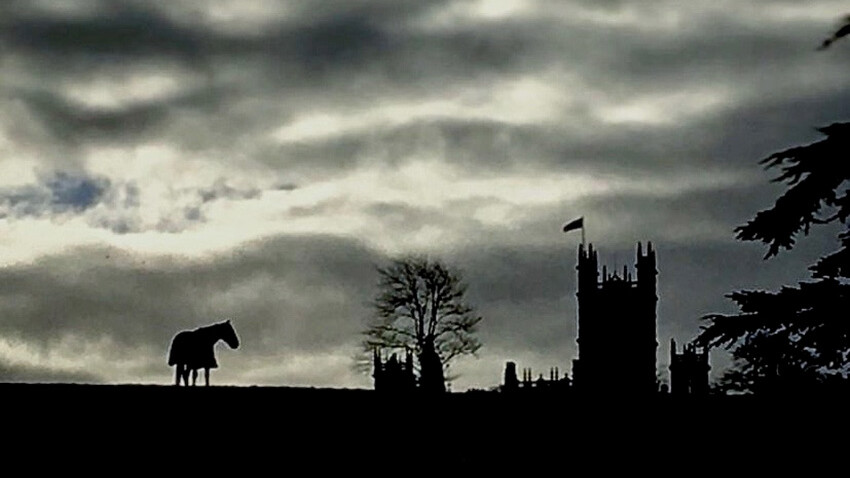
Halloween
 Every morning the fingers of light become a little more shy and greyer for longer and, it takes me a little more time to persuade myself I should launch myself out for a walk or a cold swim. Geordie, on the other hand is always somewhat more of an early morning bird than I am.
The clocks in the UK have also just gone back, marking the end of summertime and despite all our well-lit homes and high tec living, our own bodies still react, as they have for millennia, to the decreasing light in this northern part of the world . It slows us down, almost eliciting a feeling of hibernation. Lower levels of energy, a desire for comfort foods, log fires, thick ribbed socks and oversize sweaters occupy our autumnal thoughts.
Every morning the fingers of light become a little more shy and greyer for longer and, it takes me a little more time to persuade myself I should launch myself out for a walk or a cold swim. Geordie, on the other hand is always somewhat more of an early morning bird than I am.
The clocks in the UK have also just gone back, marking the end of summertime and despite all our well-lit homes and high tec living, our own bodies still react, as they have for millennia, to the decreasing light in this northern part of the world . It slows us down, almost eliciting a feeling of hibernation. Lower levels of energy, a desire for comfort foods, log fires, thick ribbed socks and oversize sweaters occupy our autumnal thoughts.
 For all the positive feelings and warming colours, it is nevertheless a time we can feel a bit low - sad. Light is important for many reasons, for example the health benefits of vitamin D and for our circadian rhythms. The daylight is mediated by the retina in our eyes and a series of molecular loops carries the information to the pineal gland which, with the hypothalamus in our brains, hosts our own internal clock.
For all the positive feelings and warming colours, it is nevertheless a time we can feel a bit low - sad. Light is important for many reasons, for example the health benefits of vitamin D and for our circadian rhythms. The daylight is mediated by the retina in our eyes and a series of molecular loops carries the information to the pineal gland which, with the hypothalamus in our brains, hosts our own internal clock. Numerous scientific papers remind us of recognising the health giving benefits of listening to our body, of when we naturally should be awake or turn to sleep. Typically many of us have managed to disrupt our waking or sleep rhythms by our fascination with screens and artificial lights.
Numerous scientific papers remind us of recognising the health giving benefits of listening to our body, of when we naturally should be awake or turn to sleep. Typically many of us have managed to disrupt our waking or sleep rhythms by our fascination with screens and artificial lights.
 However we can help ourselves by getting out into the fresh air as much as possible each day as the spectrum of daylight, which is light from the sun filtered by the atmosphere is relatively broadband whilst artificial light has negligible benefits. A cold wintery walk stirs our bodies and souls. It is also better to read books – those written on paper – before turning the bedside light off to sleep.
However we can help ourselves by getting out into the fresh air as much as possible each day as the spectrum of daylight, which is light from the sun filtered by the atmosphere is relatively broadband whilst artificial light has negligible benefits. A cold wintery walk stirs our bodies and souls. It is also better to read books – those written on paper – before turning the bedside light off to sleep.
 Traditionally, as the evenings become longer and darker, thoughts and stories turn to those of spectres and ghosts. Tomorrow is Halloween: October 31 and many of us fear the dark, the “unknown-ness”, the hours when we cannot make out what exactly what is going on, or identify all the sounds of the night. There could of course be many dangerous animals or beings lurking in the darkness.
Halloween is the night when the boundary between the worlds of the living and the dead became smudged. Celtic traditions called the day Samhain, a day to ward off ghosts, to light bonfires when the priests would also try to predict the future.
Traditionally, as the evenings become longer and darker, thoughts and stories turn to those of spectres and ghosts. Tomorrow is Halloween: October 31 and many of us fear the dark, the “unknown-ness”, the hours when we cannot make out what exactly what is going on, or identify all the sounds of the night. There could of course be many dangerous animals or beings lurking in the darkness.
Halloween is the night when the boundary between the worlds of the living and the dead became smudged. Celtic traditions called the day Samhain, a day to ward off ghosts, to light bonfires when the priests would also try to predict the future. Samhain is an Anglo-Saxon word which means to assemble or to congregate which in many ways segues into the present community celebrations which focus on eating especially pumpkins and “trick or treating”. Many children are looking forward to dressing up in bright orange costumes to go round asking for sweets which tend to be preferred to carrying out pranks!
Samhain is an Anglo-Saxon word which means to assemble or to congregate which in many ways segues into the present community celebrations which focus on eating especially pumpkins and “trick or treating”. Many children are looking forward to dressing up in bright orange costumes to go round asking for sweets which tend to be preferred to carrying out pranks!
 Pope Gregory III designated November 1 as a time to honour all saints, "All-hallowmas" (from Middle English “all hallow messe”)meaning All Saints’ Day which incorporated some of the traditions of Samhain and made it Christian. The processions often carried on to the next day, those taking part dressed in white the symbolic colour for victory and life out of the darkness.
Of course walking through the Egyptian exhibition at Highclere you can see the replica tomb paintings of Tutankhamun, dressed in white as he moves through the hours of the night to the next world and the world eternal.
Pope Gregory III designated November 1 as a time to honour all saints, "All-hallowmas" (from Middle English “all hallow messe”)meaning All Saints’ Day which incorporated some of the traditions of Samhain and made it Christian. The processions often carried on to the next day, those taking part dressed in white the symbolic colour for victory and life out of the darkness.
Of course walking through the Egyptian exhibition at Highclere you can see the replica tomb paintings of Tutankhamun, dressed in white as he moves through the hours of the night to the next world and the world eternal.
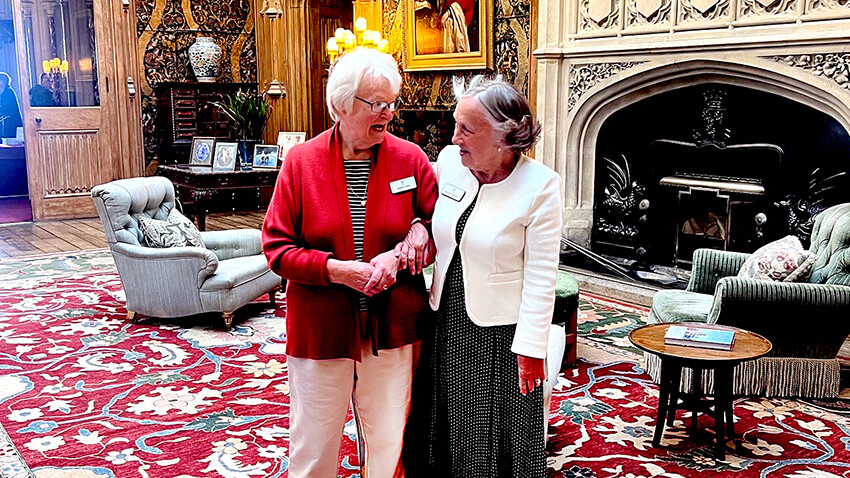
- Christmas
- Community
- Dogs & Horses
- Egypt & Tutankhamun
- Entertaining
- Farm
- Filming
- Gardens
- History & Heritage
- Daily Life
- Royalty
- Cooking
- Interiors
- Heroes
- Architecture
- Cars
- Conservation
- Downton Abbey
- Events
- Gardens & Landscape
- Highclere Castle Gin
- History
- Planes
- Restoration
- Stories & Books
- Uncategorized
- Visitors
- Wildlife
64 Comments
MY DEAREST LADY FIONNA,
RAINNY DAY 30°C
GOOD MORNING FROM RIO CLARO, BRAZIL.
HAPPY HALLOWEN FOR YOU MILADY, YOUR STAFF AND ALL THE PERSON.
LOVELY WEEK FOR YOU AND YOUR HUSBAND.
TEARS.
VILLA ALEMÃ
RIO CLARO-SP
BRAZIL
(a cold swim, um, maybe, we never should have left the British Empire. I don't have skin so thick!) Happy Halloween Countess! -Josie
Fascinating and informative. Thank you.
Yes l used to dislike this time of year when l worked shifts For the next few months working nights you hardly saw daylight Got in it was dark got up and it was going dark Was told by my GP years ago to take vitamin D tablets which l still do having retired . Nowadays my young dog takes me out into the autumn chill and like all Labradors she likes swim whatever the weather and the light is doing
Hello Lady Carnarvon
In Tudor times before pumpkins, turnips were used.
A challenge for next year?
regards
Carry on Highclere
I started reading this entry expecting something about Halloween and ended up with that as well as information on circadian rhythms and pineal glands. I love that you include educational tidbits in your blogs. Well done!
I love your blog. I tripped over one on the Downton Abbey Facebook page and I remember saying to my husband "why am I not reading this religiously?"
I enjoy the snippets of your life that you share and the tidbits of history that you weave through. Makes it feel like I'm reading a fairy tale.
Can't wait for the next one.
Happy Halloween
I eagerly await you weekly blog. Today did not disappoint! Thanks for the ties to All Hallows Eve and All Saints Day.
Such beautiful shots around the castle! I visited last October and loved how you decorated your front door. So lovely again this year! I just returned from the UK. Gorgeous in the fall!
The rich, jeweled colors of the autumn leaves & harvest produce are to me a second 'blooming' and a visual feast before (in our case) the white winter snows blanket the landscape. Your vignette of squash & gourds is beautiful!
Lovely the picture of Halloween and did you and lord Carnarvon have a wonderful weekend and l lovely to visit Highcelere castle and l am of Downton abbey
and Thank you for the email it very kind of you
Dear Lady Carnarvon,
A wonderful read as always. Halloween is not a favourite day of mine but the Autumn is a time I love. The cool crisp sunny days are great for walks. The colours are beautiful. I hope you enjoy tomorrow. Take care.
Susan
Lady Carnarvon,
I certainly empathize with you having to wake up when it is still dark, and out of your warm and cosy bed and plunge into the chores for the day.
I live in Florida "The Sunshine State" where the sun never stops beaming down on us!
On the positive side, seasons are only for a while and soon it will be spring again!
No such thing as Halloween when I was growing up in the UK thank goodness. I really dislike it.
My Grandson who is still at college has got himself a part time job at a place where he is paid to dress up and scare people
It's a funny old world.
Very timely! I am sure that Highclere Castle would be a great place to celebrate both Halloween and All SaintsDay. Thank you for your weekly thoughts. Happy Halloween
what lovely pictures you are so lucky to live in a beautiful place , waiting for the kids to arrive ,
How lovely and eloquent! Thank you so very much, for such an inspiring and uplifting expression of your encouraging feelings ! You have definitely brightened my day.The time here is 12:08PM, our clocks ,"Fall Back", next Sunday.We are in Eastern Standard Time, here in central Virgina,USA. I have to admit, your words are beautifully poetic and melodic to read.I often read out loud to myself,your message of the day... thank you,Sincerely,Emma Julie McDermott Imeson
Nice pictures of pumpkins!
But ru planning to watch horror films on Halloween? Seems that is the scariest thing to do! I personally like Michael Jackson’s ‘Thriller’:::: can’t go past it for a good night creepy swoon!
Thankyou also for that scary picture of the full moon over Highclere Castle! I must say with Christmas coming up I much prefer Christmas as a point of celebration but at Halloween I like to go into the stores and shop for ghoulish items or toy spiders!
Thankyou Lady Carnarvon
Best wishes
FLEURINA
Orange City East
Central Western NSW
Australia
Living in California, and having a Hispanic background, we are starting the celebration of Day of the Dead. November 1st is to honor and remember the deaths of children while November 2nd is to remember the deaths of all your family members and friends. This has been a difficult two months, with six of my friends dying during this time. My best friend died nine years ago and there has been a hole in my heart ever since. Happy Day of the Dead everyone, cherish your loved ones, hold them tight and remember those no longer with us.
Your postings are always looked forward to and enjoyed. Happy Halloween
Yours truly,
Stephanie Danaher
The Texas Gulf Coast
I visited Highclere castle this past July, coming from Idaho in America, and what an extraordinary highlight of my trip to England with my daughter and grandson! My favorite series is Downton Abbey and without shame I admit to watching the series dozens of times! You were on the premises that day, I just happened to see you dressed in a cobalt blue long blouse or coverlet. With a slight hesitation, I desired to meet you personally and have a photo taken, it was such a delightful surprise to see you there. You were talking with someone near the back buildings and within a few steps of mine heading toward you, you left and I missed the opportunity. Please know I am grateful you and your family allow visitors to your glorious home and for me, a rekindling of my favorite series! Thank you.
Such beautiful words and thoughts! Thank you, Countess!
What atmospheric photographs and pictures! Just gorgeous! What a beautiful post :)
Sarah
Your post today reminds me of part of an old English litany with Medieval illustrations that I had framed years ago; From Goulies and Ghosties Long Leggity Beasties and Things That Go Bump in the Night, Good Lord Deliver Us.
Beautiful photographs of Highclere in the evening light.
Lady Carnarvon,
You always share so many interesting stories with us! The photos are wonderful and gives a peek into your world! My world had the first snow flakes this morning! Have a great week.
So comforting as we approach the darker days and nights that grow dim.
Thank you
Carol Lynn Forman
Thank you so much for your interesting take and information on Halloween. I so love reading your posts❤️.
Beautiful photographs. Love the pumpkin display at your front door with your precious dogs included! We, too, have a nice display of pumpkins at our front door. The colors of Autumn are beautiful. I enjoy seeing how you decorate.
Your words are so comforting as we approach the dim light and darkness of winter.
Thank you
Carol Lynn Forman
Your words are comforting as we approach the dim light of winter and
The darker days and evenings.
Thank you
Carol Lynn Forman
Thank you for the story - and for the gorgeous photos!
Dear Lady Carnarvon,
What delightful, and at the same time, eerie pictures of the castle. My favorite? The pumpkin-colored sky, incredibly brillante!
Your words put me in the Holloween mood, as for the first time in three years we will be opening our doors to those waundering trick-o-treaters!
To the beginning of the Holidays, Cheers!
~Anna~
Great read.
Your Highclere photos are stunning.
My grandchildren are "trick o treating" in the "witch town" of Salem, Mass. Home of the 1600' witch trials. They should really enjoy themselves.
All my best,
KRISTINE LILJA-KING
Bangor, Maine
Thank you for the wonderful photo's -good on whomever took them!
Thank you too for the reminders of our natural changes. Nothings wrong, we are just being human.
All the best!
Lovely the pictures of Halloween l lovely to visit highcelere castle and did you and lord Carnarvon have a nice weekend and fan of Downton Abbey
As the days grow shorter and darkness
Comes sooner , your blog is a comfort
Lovely the picture of Halloween and did you and lord Carnarvon have a wonderful weekend and lovely to visit Highcelere castle and l am a fan of Downton abbey
Dear Lady Carnarvon,
Thank you for sharing! I always look forward on Mondays to read your blogs and I love the little things and the history you share! I’m looking forward to next week’s post! And I’m still wondering how October is already almost over! Soon it will be Christmas before we know it!
Hello Lady Carnarvon.
I am so glad I signed up to your blog, I do enjoy reading your missives. They are very interesting and informative, you conjour up in words what these Autumn days are like and dispense sage advice too.
I look forward to reading more
Thankyou very much.
Why not!
That it is!
I am so sorry - I feel wretched I missed you!
Very kind!
Beautiful photographs of Highclere in the early evening, winter is coming.
Thank you very much
I am so sorry - our minds and imagination set us apart from other mammals and yet cause us such keening memories
Great article. Always enjoy Halloween and the autumn.
Lady Carnarvon,
Our lives do revolve around dark and light - and the weather! You have captured the idea of moods and how we are subconsciously encouraged to enjoy the sunlight or perhaps take a nap when it’s rainy!
I hope your Halloween evening and All Saints Day are hopeful and sane to keep away the goblins and welcome in the saints!
I am there with you, in my mine's eye, as you describe life at Highclere Castle. I have stumbled on this Blog just today and have promised myself to read every one of the entries now until I see your beautiful home town in May of 2024. My husband and are privilaged to be able to plan our 40th Wedding Anniversary in the UK. Blessings to you and yours for sharing this treasure with the world.
Dolores Neira
I remember that verse .
Beautifully written!!
Love your writing! Glimpses of history and your lives at Highclere. Happy Halloween to you all!! Love the pictures as well! It is an escape from all that is going on, to be able to sit down and read your blog!! Much appreciated!!
I have, sadly, had a lot of time to sit around the last few weeks and I have watched (for the first time) the Downton Abbey series. I have so many questions about it and hopefully one day will be able to come home to England and ask you in person.
Meanwhile the family are gathering in Dallas to 'trick or treat' with the six year old twin Grandsons, It will be hilarious as they are quite wild, are excellent hosts to the neighbourhood children and keep us amused. We have all worked on our costumes , some of which are quite exotic .more Venetian than ghoulish, so we will see how it works out as the weather here is freezing at the moment. It was in the 90's a week ago...but this IS Texas so we expect it!
Have a happy All Hallows Eve !
Happy Halloween Lady Carnarvon! I love your colorful pumpkins at the front door with your lovely dogs. When speaking of Tutankhamun I envision him and all the mummies I saw in Cairo coming to life on Halloween!
Happy all Hallows!
Beautiful, atmospheric photographs
Lady Carnarvon,
This season is wonderful. Wether it is Holloween or not I love dressing up. I do believe in all souls day and all saints day. It's magical.
We are having our first snow of the season today on Halloween. The trees are heavily laden with snow- beautiful. We live near the shore of Lake Michigan. The snow comes across the lake picking up moisture along the way. By the time it comes ashore in Michigan it is heavy and has big flakes. We refer to it as Lake Effect snow. As wondrous as it is, by January I’m ready for spring!
Great reading and nice spooky photos, thankyou. !
Thank you for this article! Loved the picture at the front door with the four Labradors! Yes we need to make the effort during the darker shorter days, and get out for a walk! You’re absolutely right!
Hello Lady Carnarvon,
I am so enjoying reading your blog posts and reading about what life is like at the real Downton Abbey! I only found out about your blog a few months ago when I visited Highclere Castle with my family in August. I am really enjoying it, thank you for sharing and I hope that you had a nice Halloween!
Wendy,
Like you, I thoroughly enjoy the “history tidbits” in this blog. But more, in this hyper-electronic age of computers and instant communication, perhaps Lady Carnarvon was destined at birth to be part of this family. Her skills as organizer, historian, writer, and people-person serves this family in a manner that well serves this family AND would break most women and crush their marriages.
Like you, and others who read this blog and make time to leave comments, I admire the Countess’s multitude of talents.
Dear Lady Carnarvon:
Thank you for this Monday's blog and the great pictures accompanying your story.
For this Halloween, we are experiencing cold temperatures and snow showers in the greater Detroit area. That will not deter the children from trick or treat. I just won't be able to see their costumes, as the same will be covered by hats, coats, and gloves.
For All Saints Day, I will go to the cemetery to place the remembrance candles on the graves of my deceased family members.
On All Souls Day, I will attempt to attend Mass at the same cemetery's indoor Mausoleum.
Until next time, don't eat too much left-over candy.
Perpetua Crawford

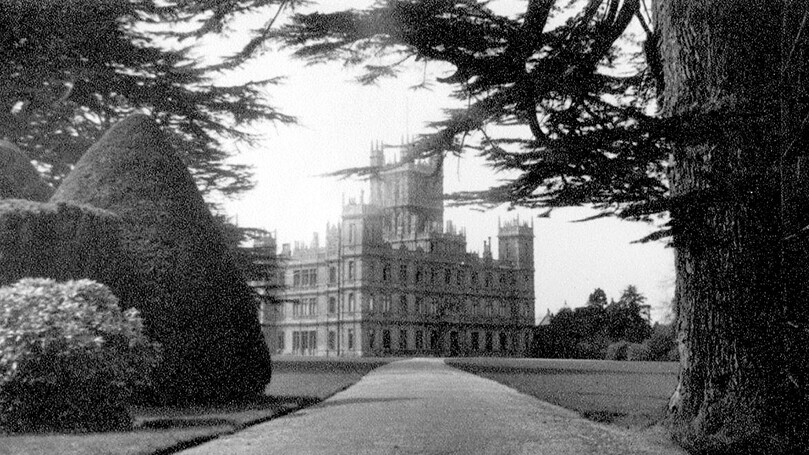
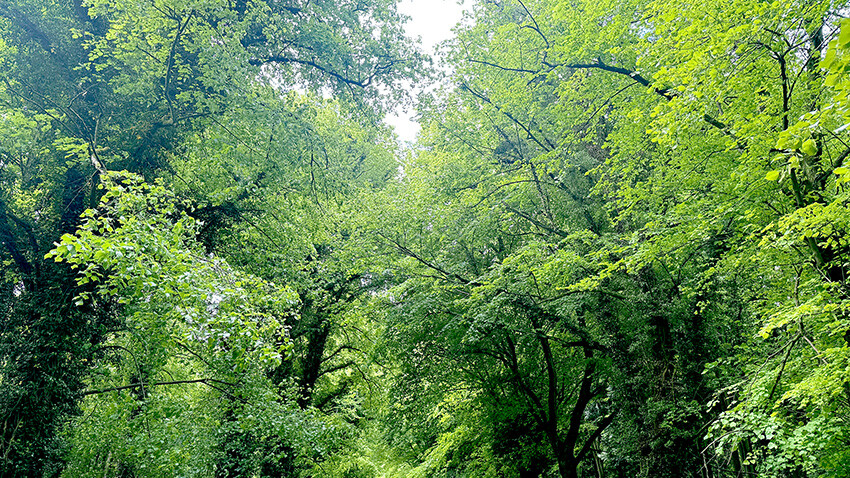
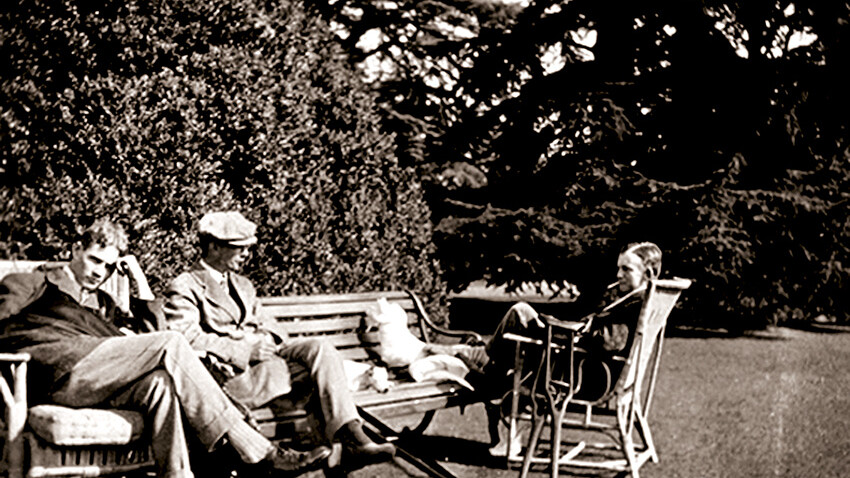
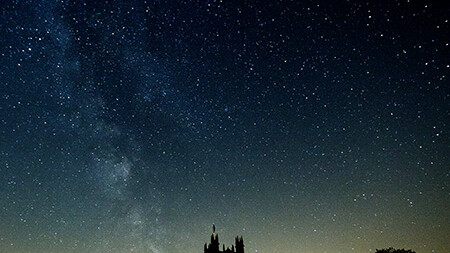
Enjoyed your article. Have always liked Halloween and the fall season.